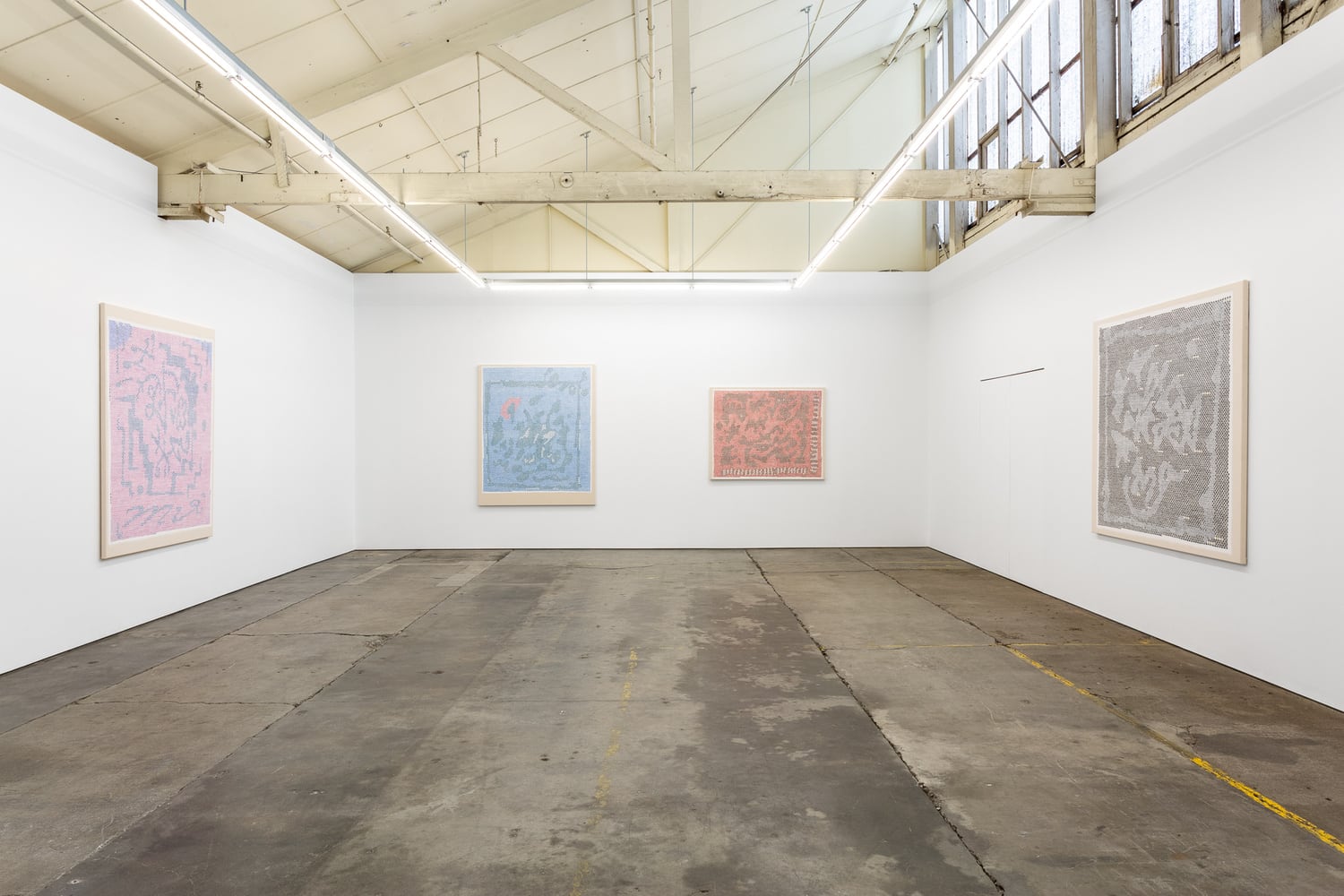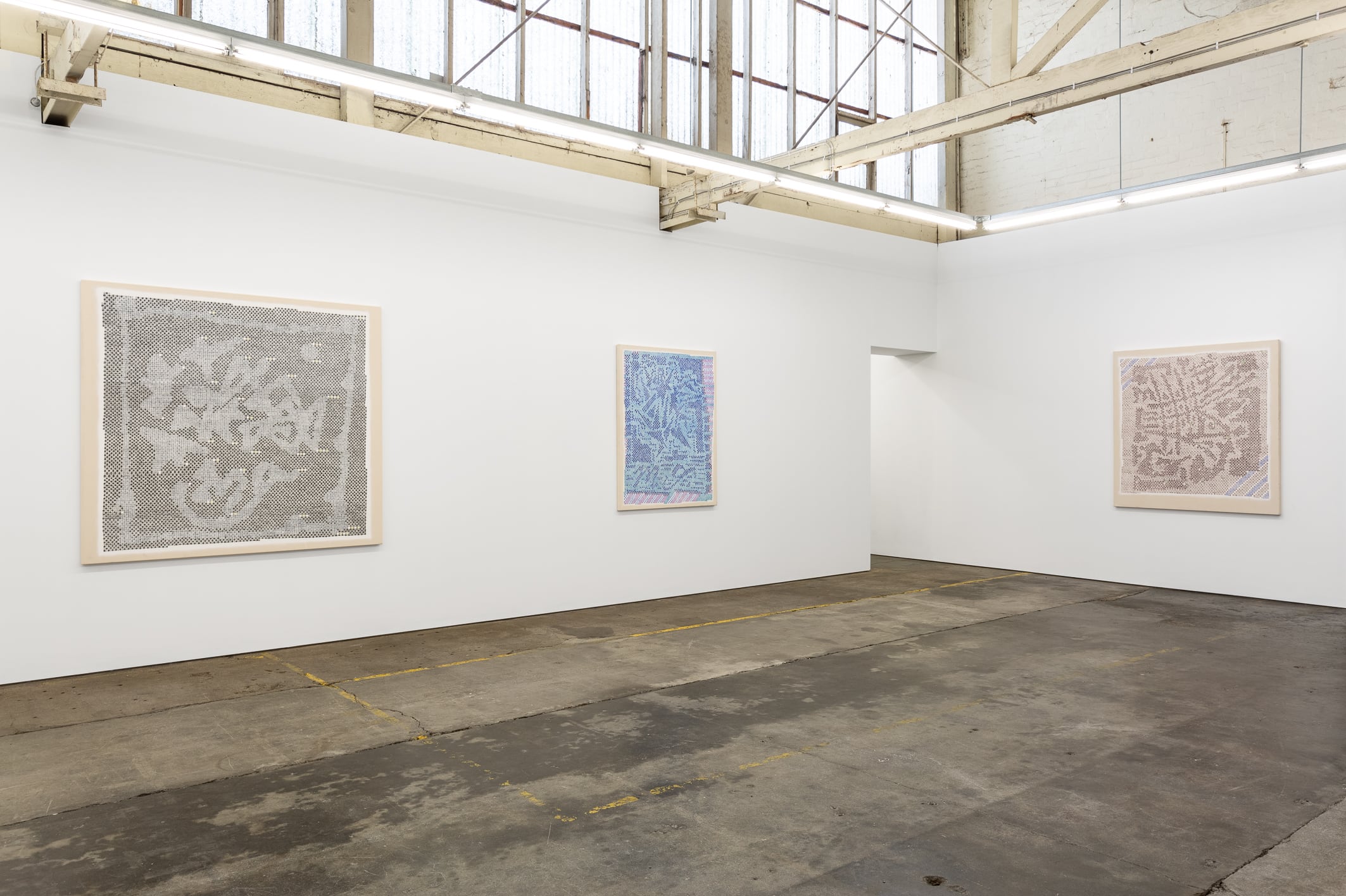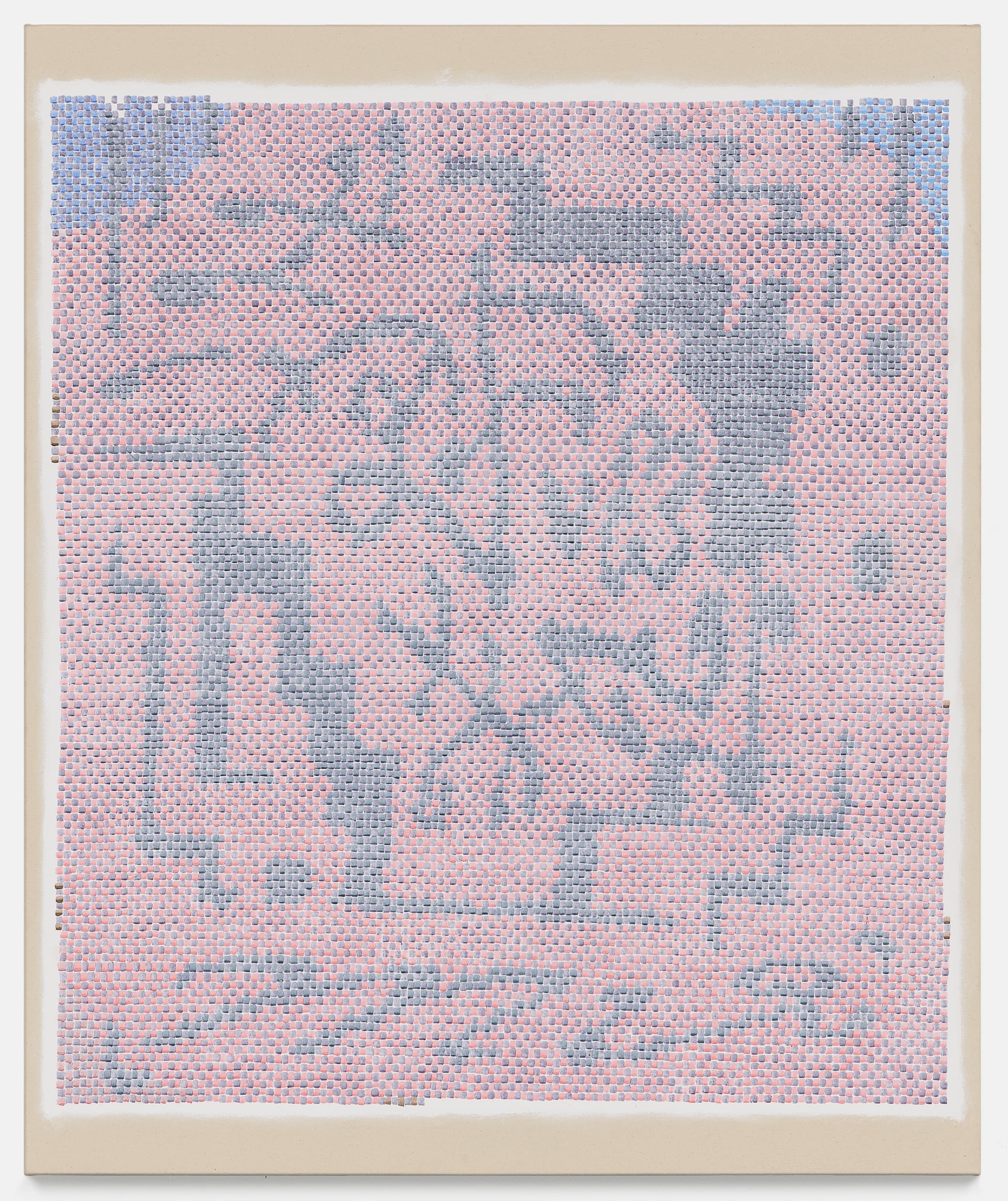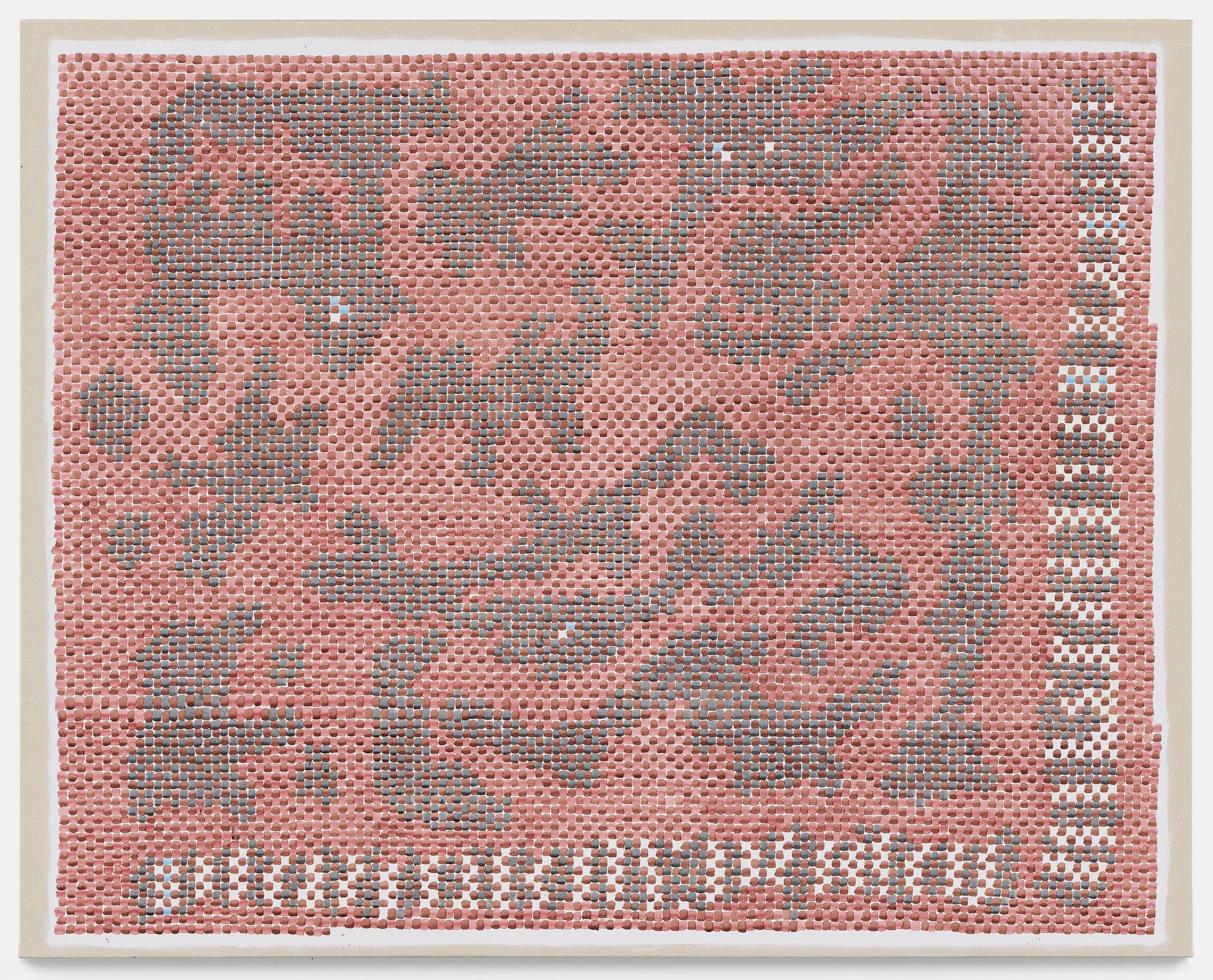



By virtue of the grid, the given work of art is presented as a mere fragment, a tiny piece arbitrarily cropped from an infinitely larger fabric. Thus the grid operates from the work of art outward, compelling our acknowledgement of a world beyond the frame.
-- Rosalind Krauss, 1979.
Box of Stamps, a new solo exhibition at Haydens by Martin George, comprises seven paintings ostensibly working with, and against, the grid as an artistic format. Following George’s last major exhibition Checkerfield Paintings (2018) at Blockprojects, Box of Stamps highlights the artist’s distinctive style of geometric abstraction, foregrounding the plasticity and two-dimensionality of painting as a medium in a series of works sparsely hung throughout the gallery. George uses the grid to create paintings that speak to their inherent material qualities, while at the same time implying a broader connection to digital media as it informs each work’s production.
The exhibition title references the artist’s practice of archiving small sketches (or stamps) in a cardboard box. From the box a drawing is selected, scanned and digitally integrated with a grid, after which the artist begins the process of mapping the projected image onto the canvas freehand. The drawing is greatly scaled up in its transmission, creating a closed circuit in which the image refers only to itself and the internal process that informed its making. The resulting work is the drawing’s motif merged with the lateral spread of the grid across a single surface, suggesting an infinite expansion contained only by the physical edge of the canvas. The inclusion of an unprimed parameter around the paintings circumference calls attention to the work as both an image and an object — the exposed canvas itself relies on the grid, a system of threads crossing each other in a series of right angles, to materialise. As warp and weft intersect, George’s work internalises the grid so that it becomes not merely subject but also the structure of the artwork itself, producing an object that is quite literally dependent on links and connections. Given this procedural context, the exhibition title thus suggests the gallery itself as another form of archive, a larger container for the indexing of drawings and the event of their ‘completion’. Evidently, each of George’s sketches is a private draft that remains open to the possibility of its future realisation as a work to be presented, unlike the paintings, which relate more directly to a mode of communication that is outward.
By incorporating a drawing practice that embraces the personal, the subjective and the narrative into his paintings, George presents a subversion of the grid. This ‘unfertile’ ground, described by Krauss as ‘a paradigm or model for the anti-developmental, the anti-narrative, the anti-historical’1 is challenged in its absolutism. George demonstrates the continued relevance of the grid in an effort to define the indefinable, to categorise and compartmentalise information. The grid can be visible or invisible in painting; it can be a map, a texture, or an abstract idea.
*Henry Law is a Melbourne based artist and writer. Law has written for un Projects, dumb brun(ette) and numerous Melbourne ARI’s. Law graduated from RMIT with a Masters of Fine Art in 2018.**
